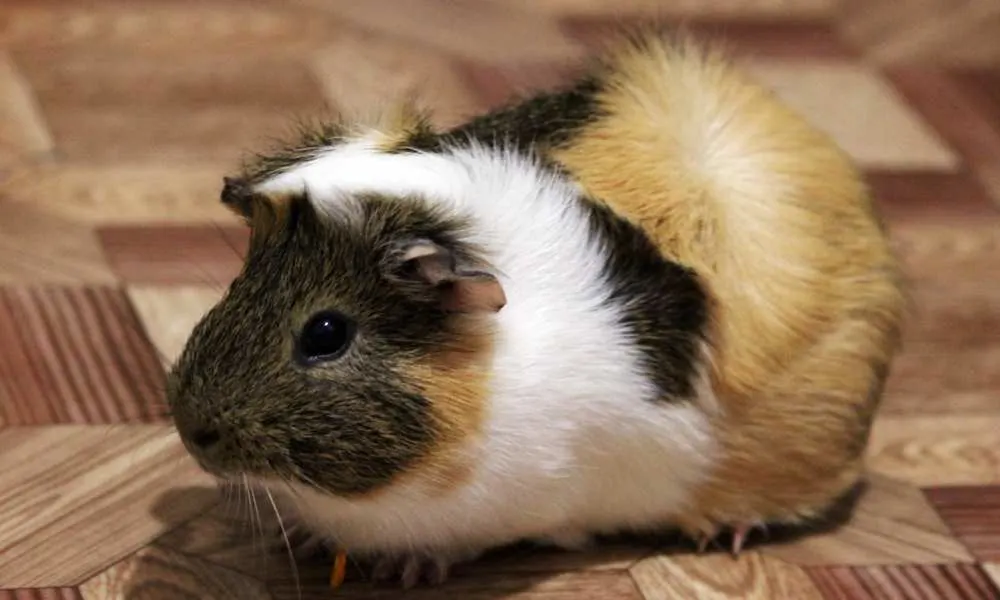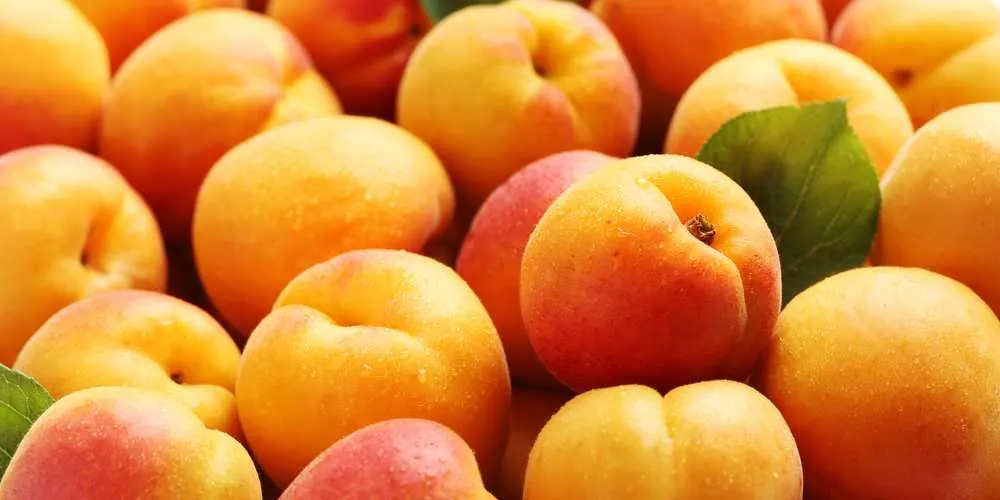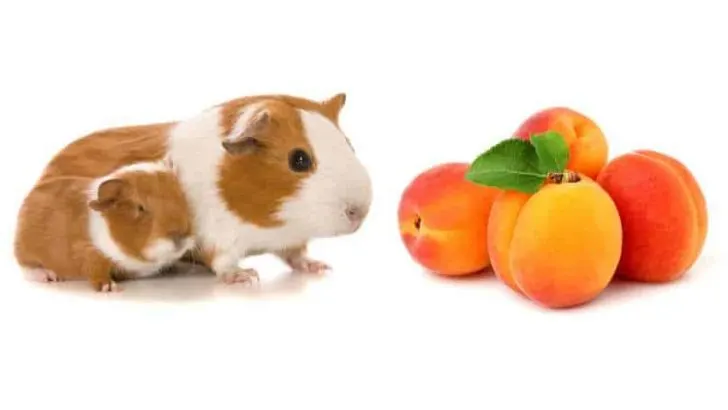If you’ve ever enjoyed a cold apricot on a hot summer day, you’ve probably asked yourself can guinea pigs eat apricots? Why wouldn’t you be able to share your favorite fruit summer snack with your fluffy pet?
Well, that’s exactly right. There is no reason not to. Apricots are perfectly safe for your guinea pigs to consume.
Generally, it’s a smart move to research before you feed your guinea pig any kind of food that you’re unsure of when it comes to their natural diet, and apricots are no exception.
Some restrictions should be noted and kept an eye on, but it’s nothing you can’t manage on your own. To learn about these and perhaps pick up on some fun facts about this fruit and your pet’s consumption of it, I suggest you take a couple of minutes and read through the article!

Can Guinea Pigs Eat Apricots?
Taking into consideration that apricots need around 100 to 120 days from blooming and maturing to being ready for consumption, you’ll have your snack ready around mid-summer!
This is great news because it’s a match made in heaven. Cold apricots and a hot day in July are like a scene from a novel. Anyone who enjoys this combination can ask themselves (and with perfect validity) if they can share a piece or two with their favorite furball.
In general, guinea pigs like sugary fruits, but as with all things in life – you can’t go overboard with it, or else there will be consequences!
To help you better understand why apricots are not only allowed but desired in your pet’s regular diet I’ve made a table of all the ingredients I feel are helpful and useful for my piggy:
| INGREDIENT | VALUE |
|---|---|
| Energy | 34 kcal |
| Protein | 1 g |
| Fat | 0,27 g |
| Fiber | 1,5 g |
| Carbohydrates | 8 g |
| Vitamin C | 8% RDI |
| Vitamin E | 4% RDI |
| Vitamin A | 8% RDI |
| Potassium | 4% RDI |
*RDI – Recommended Daily Intake
Only from a couple of ingredients of this amazing fruit, you can see that not much unwanted is found inside it. This is a good indicator when you find yourself unsure if you can feed something to your guinea pig or not.
The only fact that can be potentially worrying is the carbohydrates found in apricots. Although it’s not a small amount of sugar (which makes up for the biggest part of the carbohydrates found in this fruit) for a bite-sized fruit, it’s not all that bad.
You know firsthand how active guinea pigs are and how much energy they need throughout the day. Carbohydrates are the primary source of energy for animals (as well as humans), so instead of your animal getting some processed carbs from pellets or substitute food, they can get it in the most natural form there is.
Some other ingredients that are fantastic without questions are:
Fiber
It’s common knowledge that the guinea pig diet revolves around the fiber. This ingredient helps them regulate their stool and keep a healthy stomach throughout their life.
The amount of fiber found in apricots is a fantastic substitute for some other foods that are rich in fiber that your pet got bored of. Mix it up and keep it fun for your guinea pig as you would do for yourself!
Potassium
This is one of the most crucial ingredients in any food. For a healthy heart and a longer-living pet, you need to make sure that everything your pet gets is potassium-rich.
Like with any other micronutrient you can find in any other food, there are some downsides if you take it in too high of a dose and too small of a dose.
- Too much potassium can lead to heart palpitations and irregular heartbeats. This is not too pleasant to experience, especially for an animal as small as a guinea pig
- Too little potassium can cause muscle stiffness and digestive problems.

Downsides To Apricots In Guinea Pig’s Diet
As I’ve mentioned before (like with all food) if you go overboard there can be some consequences! In this case, there aren’t many consequences that can endanger your guinea pig, but there are some.
To better understand what can happen to your little furball take a look at some of the most common side effects that can occur when overfeeding it with apricots:
Diarrhea
This is often the biggest problem when feeding any type of small animal with a food that is high in sugar content.
Luckily, apricots have a healthy amount of fiber that can prevent diarrhea and irregular stool. Regardless, your pet can experience diarrhea if you give it more than one apricot twice a week.
If this happens just to make sure that for the next couple of days you keep your pet on a fiber-rich diet until its stool is regulated again. Besides this, make sure you cut down on water because this can slow the process down quite a bit.
Sugar Rush
As well as diarrhea, this is a frequent occurrence in these kinds of situations. A high level of sugar in this fruit can give an illusion of high energy levels to your pet and can often lead to sugar crashes. Sugar crashes are not dangerous, they just might be a little frightening to you as an owner.
This occurrence is characteristic because your guinea pig will look like it ran a marathon, and will be exhausted to the point where you think something is wrong. If this happens, just let your pet get rid of the excess energy and keep its water bowl full of freshwater.
Learn More: Can Guinea Pigs Eat Sugar?

How To Feed Your Guinea Pig Apricots?
When talking about apricots the feeding process is quite simple. Mother nature took care of pretty much everything for you, but you do need to do some simple things to ensure your pet is given the best possible experience.
First thing first – apricots have a big bone in the middle. This is easily removable by splitting the fruit in half and simply pulling the thing out.
This might come as a shock, but some people who eat around the core might oversee this simple step and find their pet nibbling on the hard part of this fruit.
The problem with this is that apricot kernels contain a high dose of cyanide and can be fatal to much bigger animals than guinea pigs.
Another thing to keep in mind is that only soft apricots are suitable for your pet’s consumption. Hard ones are too bitter and sour and can cause diarrhea much easier than the ripe ones. So be careful when picking out the ones that you give to your guinea pig.
After picking the best apricots from the bunch you should thoroughly wash them and remove the peel. Removing the peel is optional, but I like to do it so I make it much easier for my pet to consume the little pieces.
The last step is to slice the said fruit and toss it around your little friend’s cage for extra fun while gathering them!
This is the optimal way of preparing and feeding apricots to your guinea pig because you make sure all the risks are taken care of, and you don’t have to stand beside your piggy’s cage while it eats them.
Another thing that I want to add is that apricots don’t have to be given to your pet alone, you can always mix them up with other fruit or food that you feed your guinea pig regularly.
This ensures they don’t get bored with old food because you give them an additional flavor to enjoy and refresh their pallet for food. I like to do this when I notice that my pet is extremely bored with one type of food and refuses to eat it.

Final Thoughts
If you ask me, there is no question in my mind about the topic of “can guinea pigs eat apricots”.
This is one of the most nutritious fruits that you can give to your pet. They won’t have any problems with it whatsoever and will accept it in their diet from the first time you feed them with it.
It’s quite important to remember that anything that you give to your pet (even water) can be harmful in extensive quantities. So make sure you stick to one apricot two times a week and your guinea pig will be fine.
I suggest you grab some fresh apricots, clean them, cut them into little slices, and watch your guinea pig run to find them all over its cage! It will be a little disappointed when it realizes there’s no more left, but next time you feed it, it’ll be an excitement overload!


